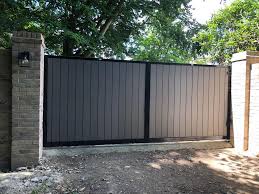Composite garden gates are popular for their durability, longevity, and low maintenance. You can Get more Information about composite garden gates. They combine the best features of different materials, typically wood and plastic, to create a product that offers the aesthetic appeal of wood with the added benefits of modern materials. Here’s a breakdown of what makes composite garden gates durable and long-lasting:
1. **Material Composition**
– **Wood Fibers**: These provide a natural look and feel, making composite gates visually appealing and similar to traditional wooden gates.
– **Plastic Resins**: These enhance the gate’s resistance to moisture, rot, and insects, which are common issues with wooden gates.
– **Additives**: UV inhibitors and stabilizers are often added to prevent fading and degradation from sun exposure.
2. **Resistance to Environmental Factors**
– **Moisture Resistance**: Composite materials do not absorb water like wood, making them resistant to warping, rotting, and swelling.
– **Insect Resistance**: Unlike wood, composite materials are not susceptible to termite infestations and other wood-eating insects.
– **UV Resistance**: Many composite gates are treated to resist UV rays, which helps to prevent fading and degradation over time.
3. **Low Maintenance**
– **No Need for Painting or Staining**: Unlike wooden gates, composite gates don’t require regular painting or staining. They maintain their appearance with minimal upkeep.
– **Easy Cleaning**: Dirt and debris can be easily washed away with water and mild soap.
4. **Longevity**
– **Long Lifespan**: Composite garden gates are designed to last for many years, often 20-30 years or more, depending on the quality of the materials and construction.
– **Structural Integrity**: The combination of wood and plastic ensures that the gate remains strong and sturdy over time, with less risk of sagging or weakening.
5. **Sustainability**
– **Recycled Materials**: Many composite gates are made from recycled materials, making them an environmentally friendly option.
– **Eco-Friendly Manufacturing**: The manufacturing process of composite materials often has a lower environmental impact compared to traditional wood processing.
6. **Aesthetic Appeal**
– **Variety of Styles and Colors**: Composite gates come in various styles and colors, allowing homeowners to choose a gate that complements their garden’s design.
– **Consistency**: Unlike wood, which can have natural variations, composite materials offer a consistent appearance.
7. **Cost Considerations**
– **Higher Initial Cost**: Composite gates might have a higher upfront cost compared to wood, but their durability and low maintenance can make them more cost-effective in the long run.
Conclusion
Composite garden gates offer a blend of durability, longevity, and aesthetic appeal, making them a smart investment for homeowners looking for a gate that will stand the test of time with minimal maintenance. Their resistance to common environmental factors and low upkeep requirements contribute to their popularity as a reliable and attractive option for garden enclosures.
